When I was shopping for inspiration last Fall, this Elie Tahari Lauren Long Sleeve Dress caught my eye. I love the volume in the collar and the wrap shape is ever-appealing. When Vogue 8827 was issued earlier this year, I was excited to see a pattern for this inspiration piece and bought it right away.
It's quite a fabric hog and I didn't have too many pieces large enough. I decided to go for this lightweight wool purchased at Guss Woolens in Baltimore ($20 for the piece, about 2 2/3 yard) at a sewing meetup in February of this year. I knew I was taking a risk with the color and the volume. This could very easily have come out looking like a nightgown. However, I think my gamble paid off--this is a great dress!

The only alteration I did to the pattern was a slight Small Bust Adjustment, shortening the front crossover/collar drape a bit by folding some length out.
The back is drafted with a yoke, and then the lower back is voluminous and gathered into the yoke. I figured that would take care of my broad back needs as it is broad near the base of the shoulderblades. It does, though I feel a tiny bit of restriction in my arm movements. Not enough to actually affect my range of motion; I think it's just that I'm so used to unlimited room to move that it feels restricted.
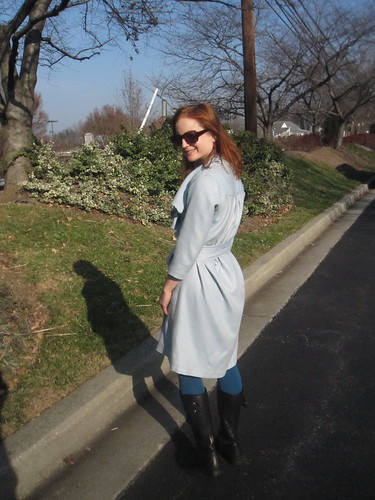
I also did not do a swayback adjustment. The voluminous back is not really compatible with any center back contour (and adding a CB seam would have made the gathering more difficult). The tie means that any extra fabric in the back over the swayback can be bloused above where the belt wraps around. I was most concerned about this gamble, and whether the voluminous back would be sloppy/overwhelming. I considered changing to a plain back, but decided to give the pattern a shot as drafted, but I think the design is nice in the end.
Part of the reason the pattern requires a huge volume of fabric is that the collar/flounce is meant to be faced My fabric looks the same from both sides, and I wanted to take advantage of that, as well as maintain the maximum possible drape on the flounce.
Figuring out how to do everything required a bit of thinking about right side/wrong side. The wrong side will be the right side on the flounce (which extends to become the back collar), so the serger rolled hem needed to be done wrong-side-up, and the back collar seam needs to be sewn wrong sides together. To make sure I had the proper side, I marked the wrong side of the fabric with a bit of tissue paper.
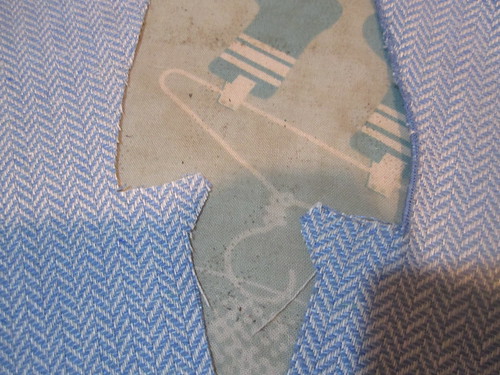
First, I trimmed away the seam allowance on the front opening edge above the waist, where the ties would be attached, then did a serger rolled hem above the waist (with the wrong side of the fabric up, as mentioned).
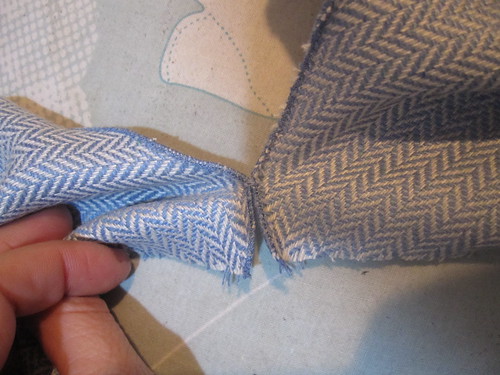
To ensure that the back collar edges would meet perfectly, I hand-tacked the rolled hem edges together, and then stitched the center back collar seam, which is cut in one with the front piece, wrong sides together.
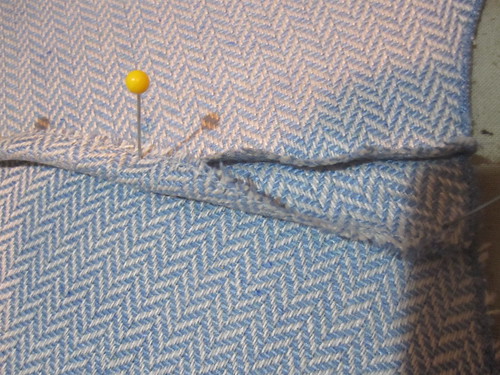
To form the flat fell seam, I trimmed one side of the seam allowance, then folded the full-length side over the short side. The photo illustrates how the longer seam allowance folds over the shorter. Everything is actually pressed to the side.
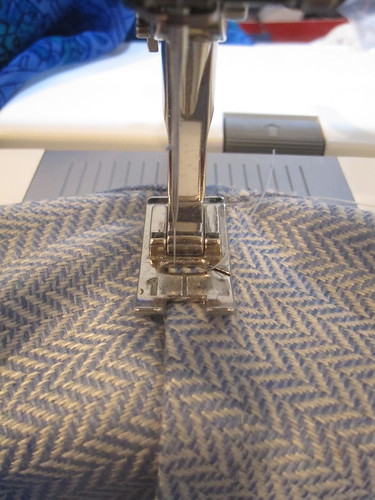
Once it was folded, pressed, and pinned into place, I topstitched close to the folded edge. For topstitching close to an edge, I find it easier to click the needle over rather than try to run the foot close to the edge. Here I have it one click over to the left.
The end result looks good from both sides, perfect for a pattern where the wrong side is sometimes the right side.
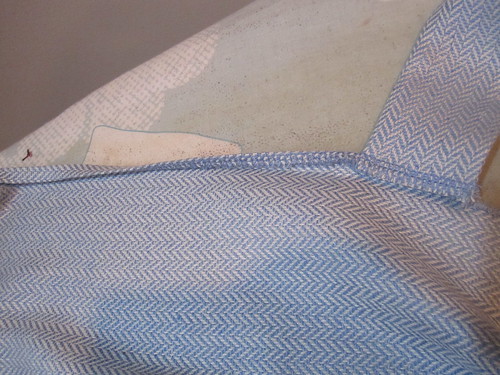
As drafted, this pattern is sort of a faux wrap dress, or something like that. At any rate, it's not meant to have ties that go through an opening and wrap around. There are supposed to be weird small string ties on the inside, and then you wrap an unattached sash around the waist. The reviewers generally complained that it was difficult to keep the dress closed. After getting it assembled, I determined there was no discernible reason this could not be a regular wrap dress, so I decided to go the traditional route.
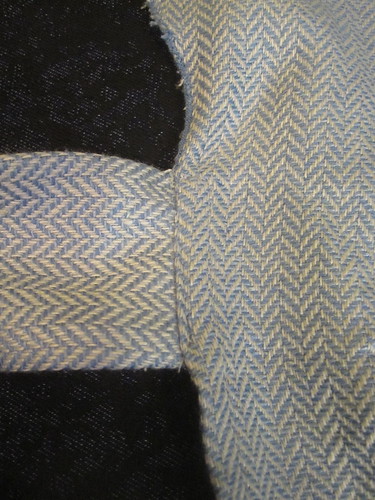
To attach the tie, I stitched it right sides together with the front opening edge, placing it at the notch where the seam allowance still remained (see the photo above showing the rolled-hem finish above the waist). Then I serger finished the edge, including the tie. Next, I double-folded and pressed the front opening edge from the tie down, and topstitched the folded under edge in place.
I am pretty proud of how seamlessly (for lack of a better, less literal word!) the front opening edge transitions from the serger rolled edge to the tie and finished lower edge.
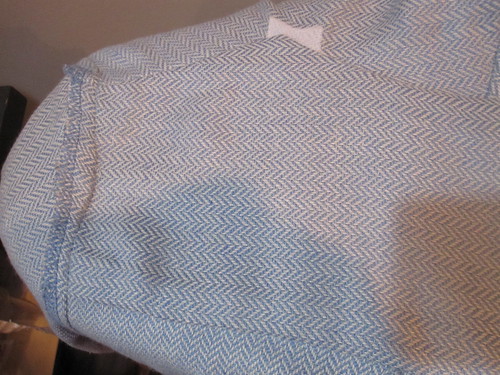 |
| Clean Finish |
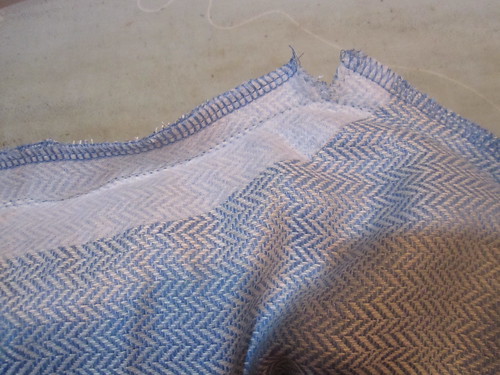 |
| Clip to stitching |
The back yoke is also meant to be lined. It was a tight squeeze, but I was able to burrito it for a clean finish. If you are facing the flounce, I wouldn't risk trying the burrito method. To keep the back neck stable while supporting the weight of the collar, I interfaced it.
I also put a square of interfacing on the shoulder/neckline corner of the front piece with integrated collar to reinforce. You have to clip all the way to the stitching to get a nice corner.
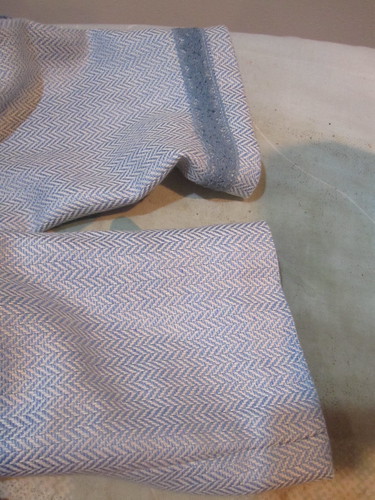
The hem is just turned under and machine blind-stitched, but I used hem lace at the sleeves because I didn't have quite enough fabric for a good hem allowance. It ends up being a nice touch.
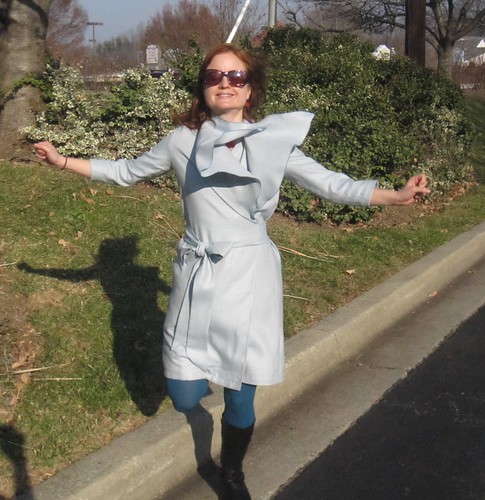

I was really pleasantly surprised by how cute this came out. I don't think it has a nightgown vibe, nor is it overwhelming for my frame. The non-faced collar has a lot of movement and drapes well. All in all, a very successful project. I can see it for Spring in a luxurious silk...
All photos are here and the pattern review is here.
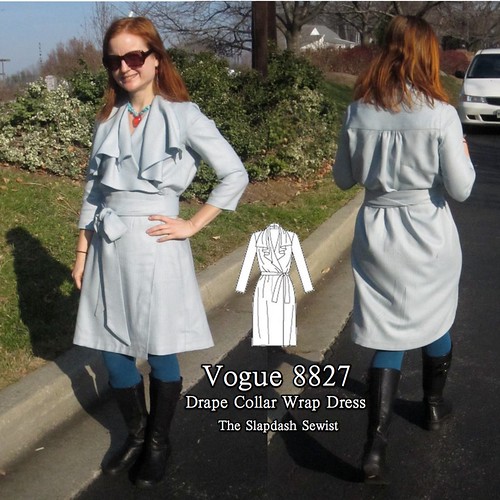



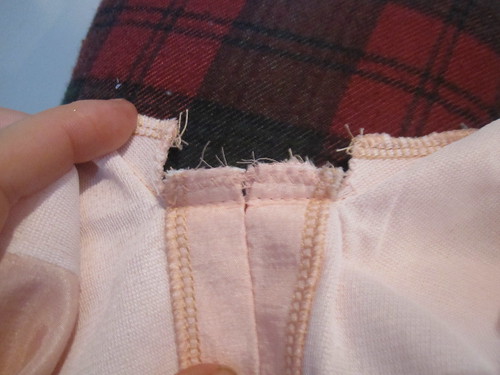
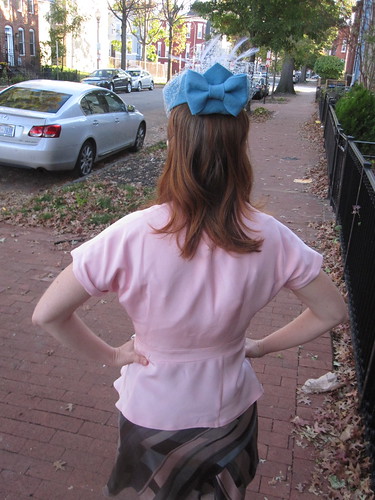
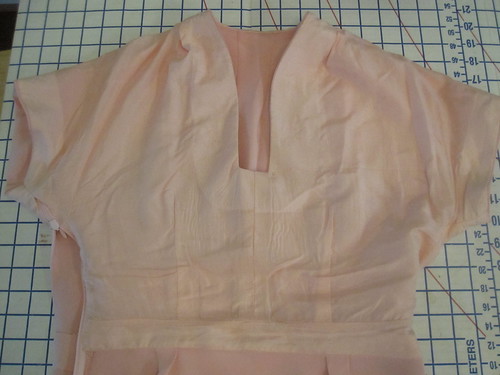





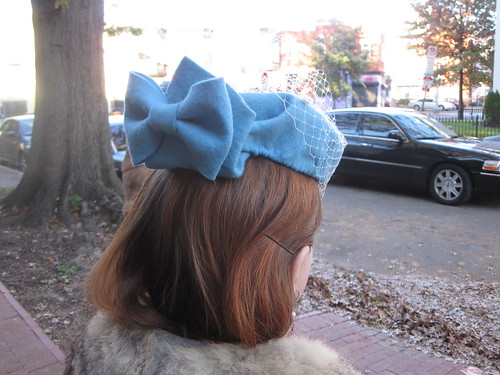

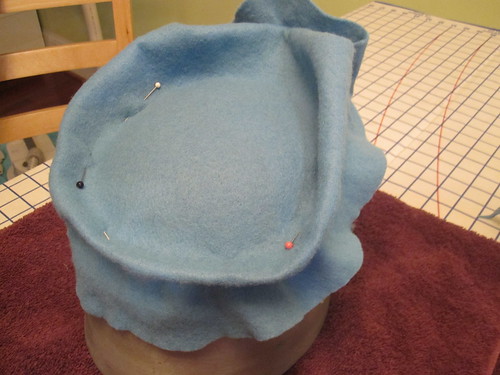


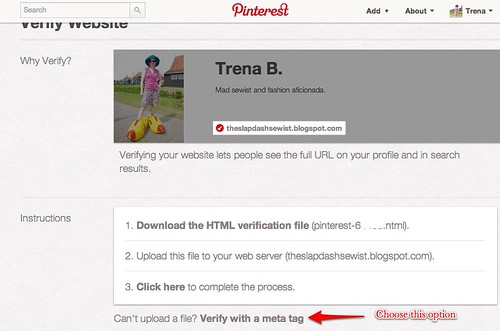
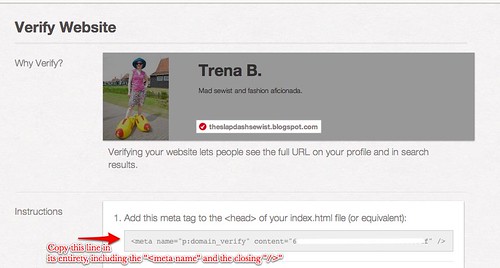




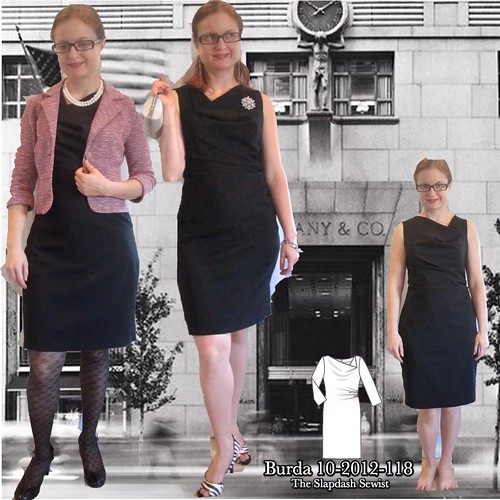

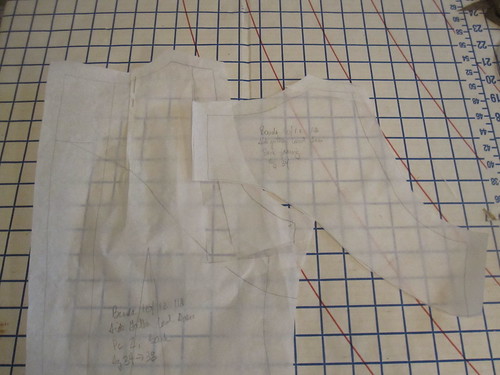
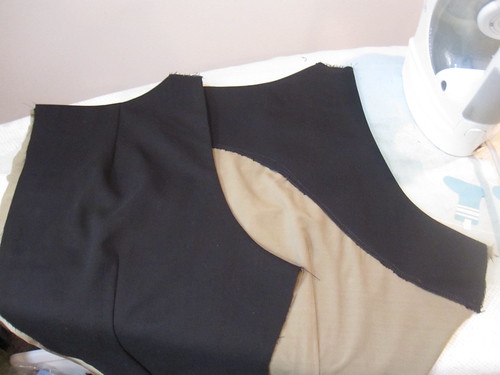

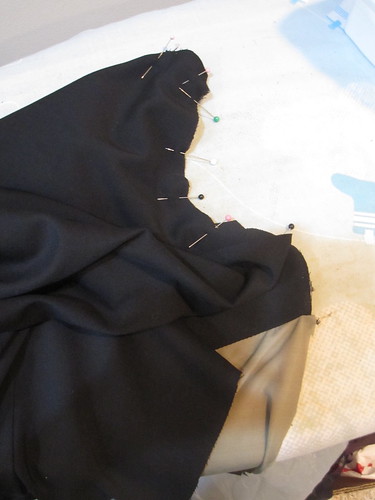


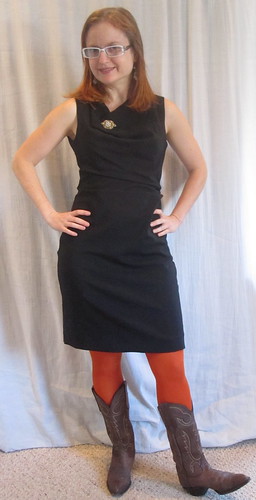


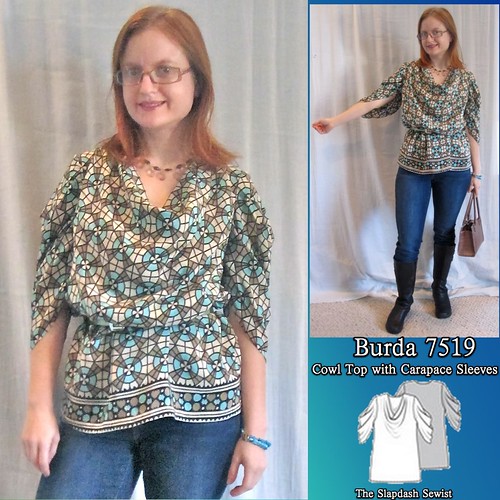
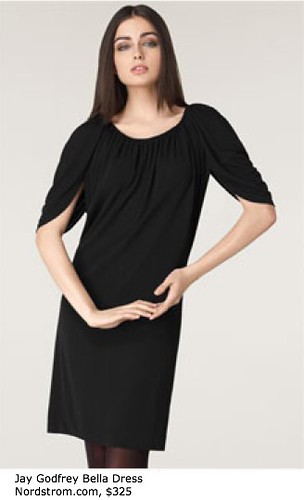
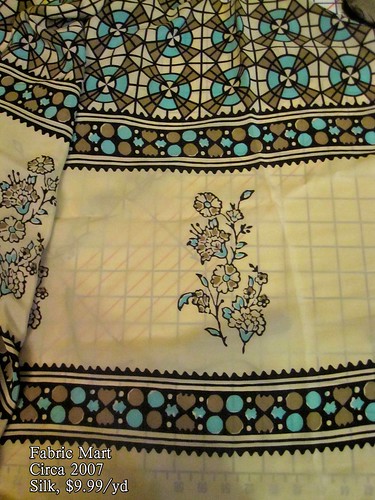
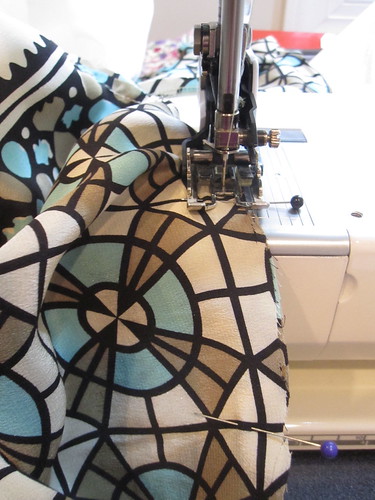
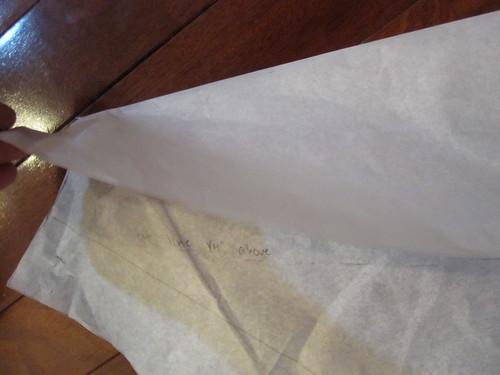

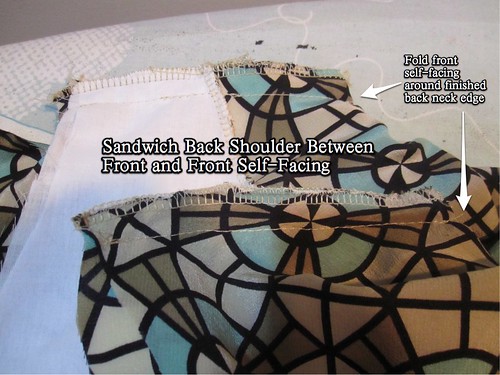



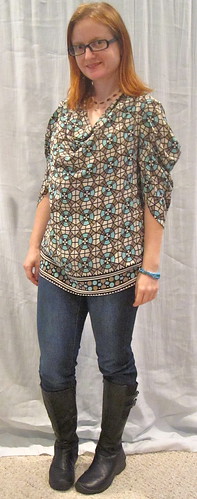
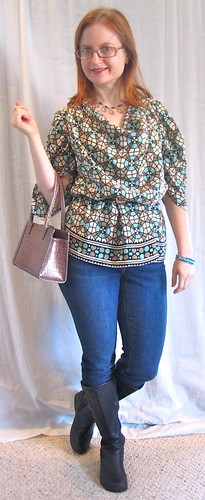

.jpg)






.png)


































































.jpg)















